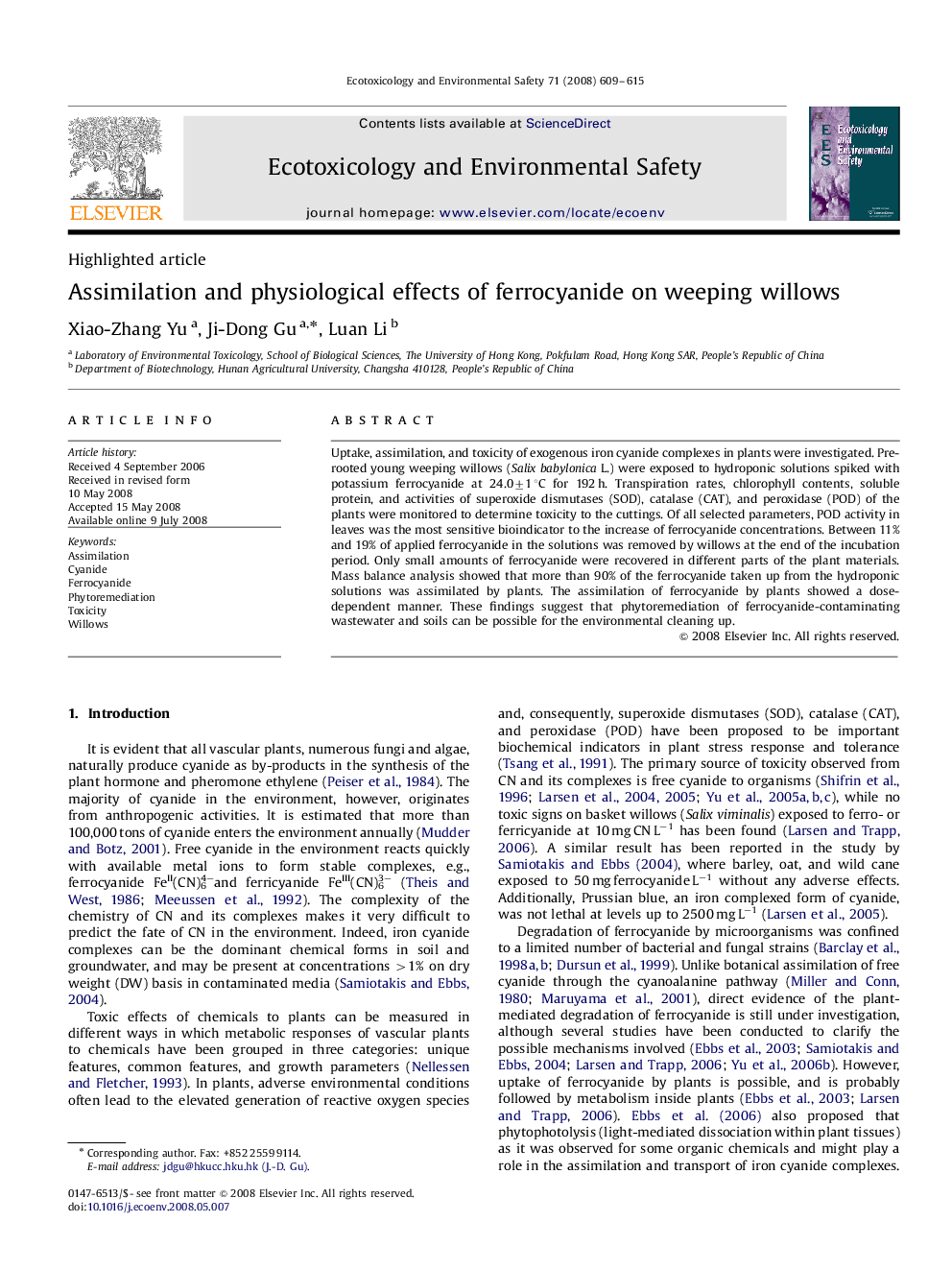| Article ID | Journal | Published Year | Pages | File Type |
|---|---|---|---|---|
| 4421792 | Ecotoxicology and Environmental Safety | 2008 | 7 Pages |
Uptake, assimilation, and toxicity of exogenous iron cyanide complexes in plants were investigated. Pre-rooted young weeping willows (Salix babylonica L.) were exposed to hydroponic solutions spiked with potassium ferrocyanide at 24.0±1 °C for 192 h. Transpiration rates, chlorophyll contents, soluble protein, and activities of superoxide dismutases (SOD), catalase (CAT), and peroxidase (POD) of the plants were monitored to determine toxicity to the cuttings. Of all selected parameters, POD activity in leaves was the most sensitive bioindicator to the increase of ferrocyanide concentrations. Between 11% and 19% of applied ferrocyanide in the solutions was removed by willows at the end of the incubation period. Only small amounts of ferrocyanide were recovered in different parts of the plant materials. Mass balance analysis showed that more than 90% of the ferrocyanide taken up from the hydroponic solutions was assimilated by plants. The assimilation of ferrocyanide by plants showed a dose-dependent manner. These findings suggest that phytoremediation of ferrocyanide-contaminating wastewater and soils can be possible for the environmental cleaning up.
